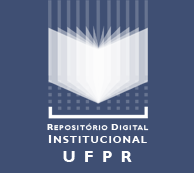Spatial and temporal changes of the ecosystem services availability in a microwatershed in Northeast Brazil
DOI:
https://doi.org/10.5380/dma.v52i0.57716Keywords:
urban expansion, landscape change, natural resources, ecosystem services valuation, green spaceAbstract
Changes in land use and land cover (LULC) alters the dynamics of ecosystems and the provision of ecosystem services, which are essential to the maintenance of life and human well-being. Human settlement in developing countries generally occurs in a disorderly and unplanned manner, leading to environmental degradation. In Northeast Brazil, water is a scarce resource and urbanization tends to occur along the water network and increase pressure on the quality and availability of this resource. This paper analyzes LULC changes in 1989, 2007 and 2014 and the associated impacts on the provision of ecosystem services in the microwatershed Riacho das Piabas (Paraíba, Brazil). LULC changes were identified and quantified using remote sensing techniques and geographic information system. Ecosystem services value (ESV) were estimated using average monetary value available in the literature using the benefit transfer method. In 1989 the estimated total ESV was US$ 7.18 million, reducing to US$ 3.73 million in 2007 and US$ 2.72 million in 2014. There was a 115% increase of built area between 1989 and 2014 that resulted in reduction of ecosystem services of 62% between 1989 and 2014. The decline in ESV reflects the negative impact of the urbanization process on the provision of ecosystem services, especially those offered by vegetation. The arboreal vegetation was the most valuable LULC class in the study area, and the one that showed the greatest reduction in area. Planning, creating and maintaining green areas is critical to mitigate the impacts of urbanization on the provision of ecosystem services.
Published
How to Cite
Issue
Section
License
Copyright on works published in this journal rests with the author, with first publication rights for the journal. The content of published works is the sole responsibility of the authors. DMA is an open access journal and has adopted the Creative Commons Attribution 4.0 Not Adapted (CC-BY) license since January 2023. Therefore, when published by this journal, articles are free to share (copy and redistribute the material in any medium or format for any purpose, even commercial) and adapt (remix, transform, and create from the material for any purpose, even commercial). You must give appropriate credit, provide a link to the license and indicate if changes have been made.
The contents published by DMA from v. 53, 2020 to v. 60, 2022 are protected by the Creative Commons Attribution-NonCommercial-NoDerivatives 4.0 International license.
DMA has been an open access journal since its creation, however, from v.1 of 2000 to v. 52 of 2019, the journal did not adopt a Creative Commons license and therefore the type of license is not indicated on the first page of the articles.






